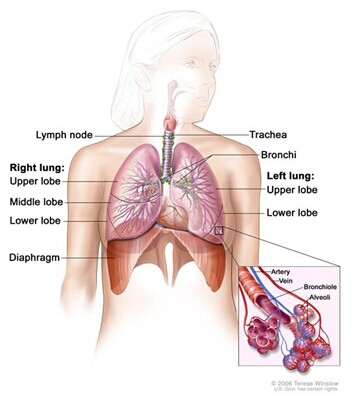“Thank you for giving me a second life!” “Fuda Cancer Hospital’s minimally invasive technology is the best in the country!” … These heartfelt words come from Uncle Zhang (pseudonym), a patient from Gansu Province. After battling lung cancer for over seven years and reaching the brink of despair, he regained vitality thanks to the individualized, precision treatment at Fuda Cancer Hospital. His lung lesions have been effectively controlled, and his quality of life significantly improved.

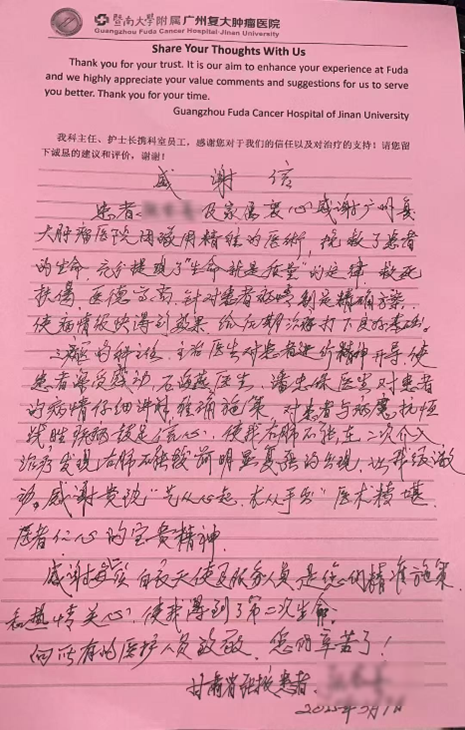
From Tuberculosis → Pulmonary Nodules → Lung Cancer
Uncle Zhang is a retired miner, and also a longtime smoker and drinker. Due to years of working in coal mines, he developed tuberculosis more than two decades ago. After receiving treatment at the local disease control center, his tuberculosis improved. However, later examinations revealed pulmonary nodules.
In June 2017, he began experiencing symptoms like coughing and coughing up blood-stained sputum. Tests confirmed his diagnosis: lung squamous cell carcinoma. Local doctors recommended surgery or chemotherapy, but he refused. “Surgery is too traumatic, and chemotherapy is too painful.” Fearing he wouldn’t survive the surgery or that chemotherapy would only hasten his decline, he decided against both. Though he originally planned to receive proton and heavy ion therapy in Shanghai, he abandoned that plan too—unwilling to undergo anesthesia and a bronchoscopy again—and instead began taking traditional Chinese medicine (TCM) orally.
Rejecting Chemotherapy, Condition Worsens
By mid-2024, Uncle Zhang’s condition became more complicated. He experienced worsening symptoms including chest tightness, shortness of breath, and bloody sputum. Imaging revealed right lung atelectasis (collapse), enlarged mediastinal lymph nodes, and a tumor in his right bronchus blocking the airway and invading the lower trachea. Still, he rejected chemotherapy and continued taking oral TCM. In his view, chemotherapy was like “killing a hundred enemies but losing three thousand troops.”
But reality proved that relying solely on TCM to treat cancer was ineffective. Earlier this year, the tumor had caused severe narrowing of the lower trachea and right main bronchus, making it extremely difficult for him to breathe. He suffered repeated emergencies in Hainan and was rushed to local hospitals multiple times.
Seeking more effective treatment, Uncle Zhang and his son searched far and wide. After reading media reports about Fuda Cancer Hospital’s expertise in minimally invasive techniques—such as cryoablation, NanoKnife, iodine seed implantation, microwave ablation, and interventional therapy—they decided to seek help there.
Immunotherapy + Interventional Chemotherapy: A Powerful Alliance
Atelectasis, airway stenosis, multiple lymph node metastases… In addition to the threat of the tumor itself, his collapsed lung posed another critical danger. On one hand, the lack of air in the alveoli leads to hypoxia, which can result in respiratory failure; on the other hand, atelectasis increases the risk of serious lung infections—especially dangerous for someone like Uncle Zhang, whose lung infection could further worsen respiratory failure and threaten his life.
In light of his complex case, Dr. Shi Haiyan from the Department of Internal Medicine immediately initiated a multidisciplinary consultation. After expert evaluation, the team decided on a combined treatment of immunotherapy and interventional chemotherapy to control the tumor’s progression.
Immunotherapy was used first to activate the body’s own immune system to fight cancer cells.
Interventional arterial infusion chemotherapy was then performed. Under the guidance of DSA (Digital Subtraction Angiography), a catheter was super-selectively inserted into the tumor’s feeding artery—the bronchial artery—to directly infuse chemotherapy drugs. This method delivers a high local concentration of drugs to kill cancer cells.
Compared to traditional treatments, interventional chemotherapy requires no surgery and targets the affected area directly, increasing drug concentration at the tumor site while significantly reducing systemic side effects. When combined with immunotherapy, the two methods can work synergistically for enhanced effect—a powerful treatment strategy.
Condition Improves, Grateful Beyond Words
When Uncle Zhang first arrived, it was during the Chinese New Year holiday, and the hospital had fewer patients. Worried, he suspected he’d fallen into a “scam hospital.” But after one treatment cycle and follow-up scans, his doubts were completely dispelled.
“My breathing has eased, my lung has re-expanded, and the tumor has shrunk,” he said with relief.
Following that, he underwent three additional cycles of the combined therapy. The lesion in the upper lobe of his right lung continued to shrink, and his overall physical condition improved significantly. With advanced technologies and attentive care, Uncle Zhang experienced very little discomfort during hospitalization. He couldn’t help but recommend Fuda to others.
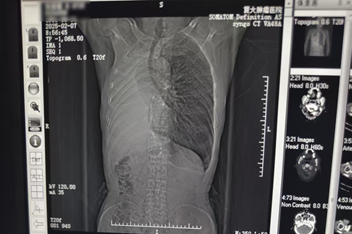
Before treatment: lung collapse
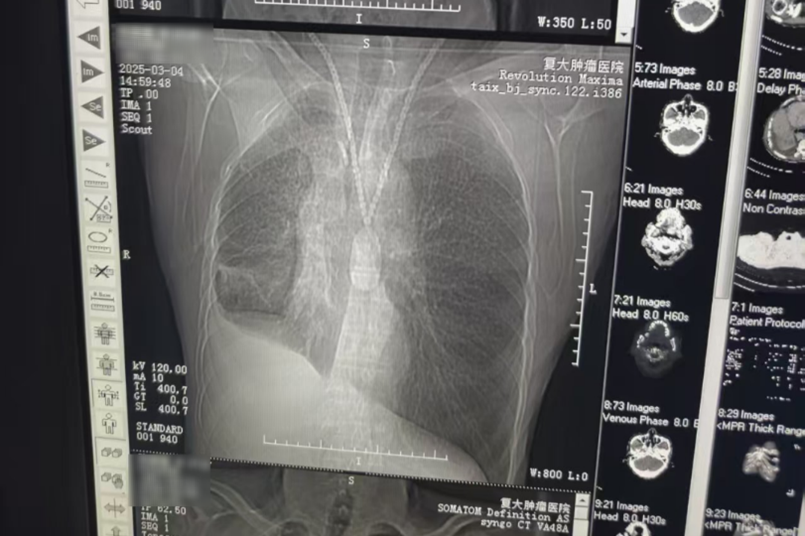
After treatment: lung re-expansion
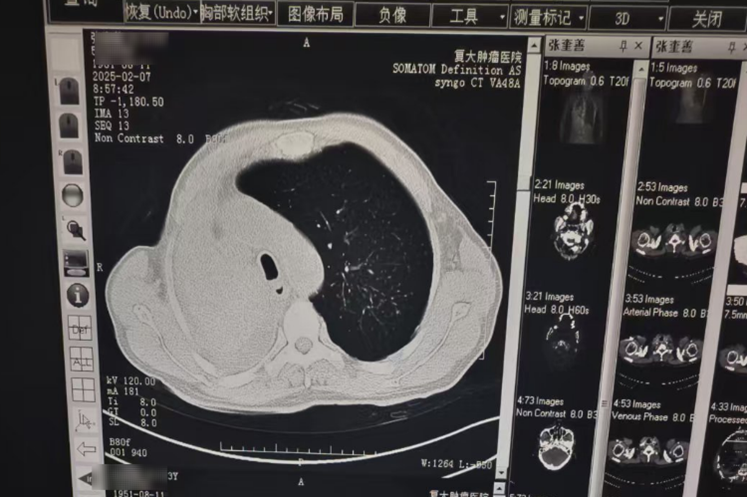
Before treatment: lung lesion
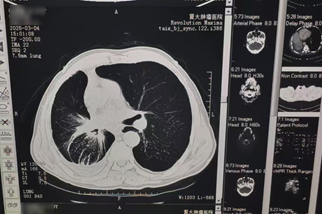
After treatment: lesion reduction
“Are you still alive?” That was the first reaction from Uncle Zhang’s dance friends when he returned home.
“They all thought I was on the brink of death and wouldn’t make it, so they were shocked to see me back.”
A passionate dancer of Xinjiang-style dances, Uncle Zhang is once again active on the dance floor. From barely managing one song to now dancing through three complete routines, he proves with every step:
The miracle of life shines brightest in the rhythm of a joyful dance.
Health Tips: Understanding Lung Cancer
Lung cancer is the result of a combination of multiple factors.
Smoking is the leading cause. Cigarette smoke contains more than 60 carcinogens (e.g., nitrosamines, benzo[a]pyrene) that damage lung cells. Long-term smokers have a significantly higher risk of developing lung cancer.
Secondhand smoke also poses a major threat—prolonged exposure drastically increases cancer risk.
Environmental exposure to pollutants like industrial emissions or vehicle exhaust is another major contributor.
Occupational hazards also increase risk—such as prolonged exposure to asbestos, arsenic, beryllium, or cadmium for workers in mining, painting, or asbestos processing industries.
Early-stage lung cancer often has no obvious symptoms, but you should seek medical attention if you notice the following warning signs:
Persistent cough (lasting over two weeks)
Blood-stained or bloody sputum
Chest pain or shortness of breath
Hoarseness (possibly from tumor pressing on the recurrent laryngeal nerve)
Recurrent pneumonia or bronchitis
Unexplained weight loss or fatigue
